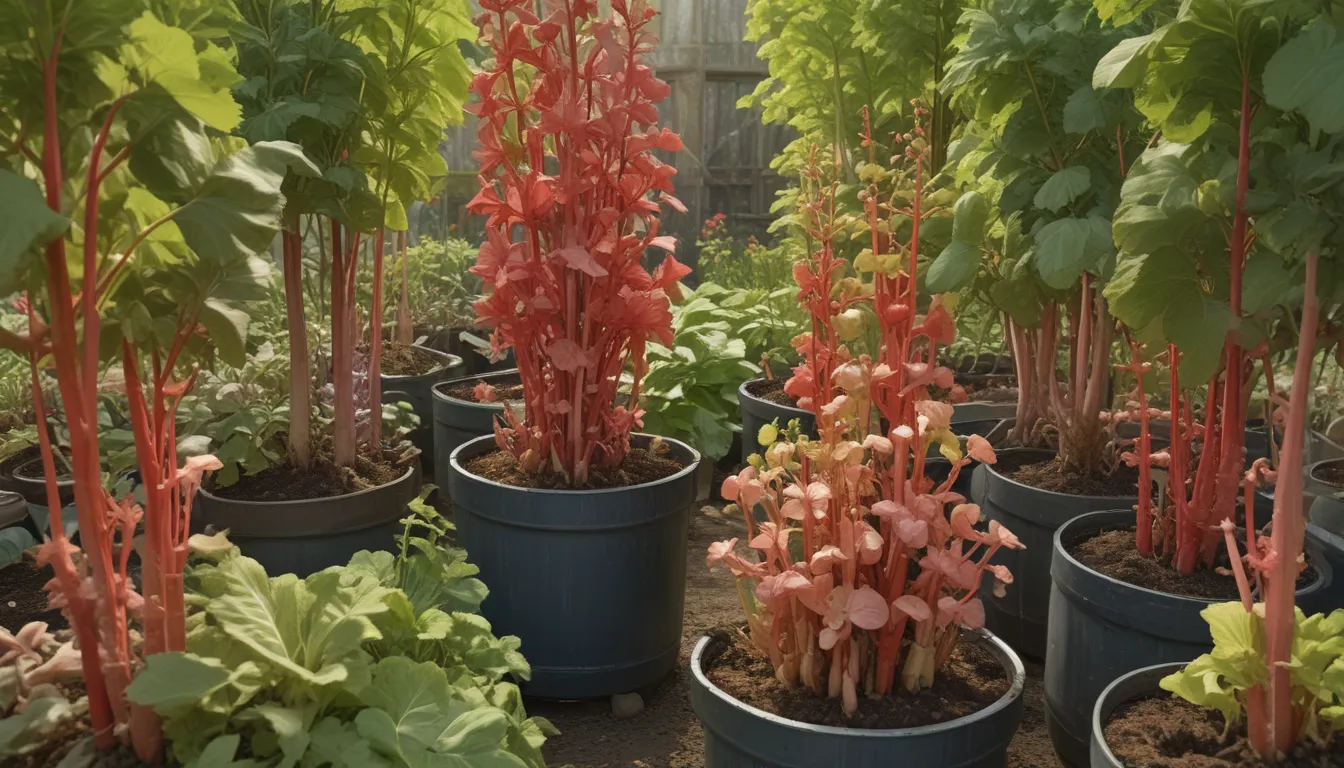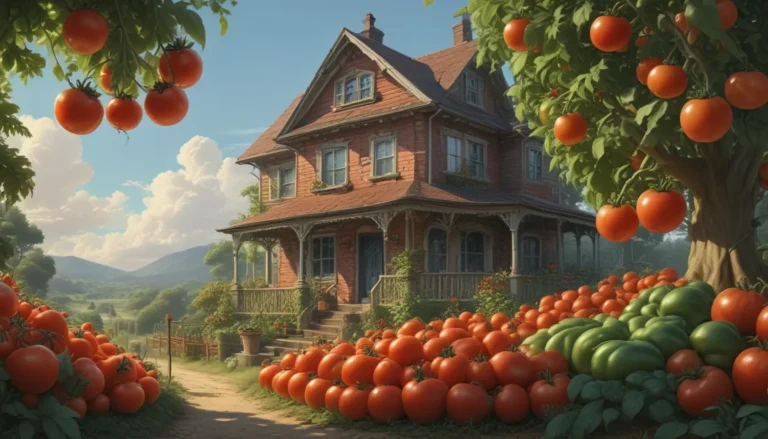Growing Rhubarb in Containers: An Ultimate Guide for Home Gardeners

Are you a fan of rhubarb? Do you love the sweet, tart tang of the red-green stalks in pies and jams? If so, you’re in luck! In this article, we’ll show you how to grow rhubarb in containers so you can enjoy a fresh harvest of this delicious plant right in your own home.
What You’ll Learn
Here’s what we’ll cover in this comprehensive guide:
- Why Grow Rhubarb in a Container?
- Choosing the Right Container
- Preparing Your Container
- How to Grow
- Container Care
- Growing Tips
- Cultivars to Select
- Managing Pests and Disease
- Harvesting
- Recipes and Cooking Ideas
Why Grow Rhubarb in a Container?
Rhubarb is a delightful plant that produces red or reddish-green stalks that are perfect for pies and other culinary delights. Growing rhubarb in containers is an excellent option for those with limited garden space. It also helps to keep the plant in check, as rhubarb has a tendency to spread and take over the garden if left unchecked.
In addition, growing rhubarb in containers allows you to control the growing conditions, especially in areas where the climate may not be ideal for this plant. With proper care, you can enjoy a bountiful harvest of rhubarb stalks right at home.
Choosing the Right Container
When selecting a container for growing rhubarb, opt for one that is at least 20 inches tall and wide if planting crowns, divisions, or bare roots. You can choose from a variety of container materials, such as plastic, terra cotta, or decorative pots, based on your preferences.
For starting seeds, use a pot that is at least eight inches wide and seven inches deep. Make sure the container has proper drainage to prevent waterlogging and promote healthy root growth.
Preparing Your Container
Fill your container with either potting soil mixed with a balanced vegetable fertilizer or garden soil amended with compost or well-rotted manure. Make sure the soil is organically rich and drains well, with a pH between 5.0 and 7.0.
If using garden soil, conduct a soil test to ensure the pH level is suitable for rhubarb growth. Proper soil preparation is essential for the health and vitality of your rhubarb plants.
How to Grow
You can propagate rhubarb in four ways: from a crown, a division, a dormant bare root ball, or seed. Each method has its own requirements, but all can be successful in container gardening.
Planting a Crown
To plant a rhubarb crown, create a hole in the soil and carefully place the root ball inside. Water thoroughly and provide sun exposure to promote healthy growth. Wait until the stalks are ready for harvest before picking them.
Planting a Division
If you have a division from an existing plant, follow similar planting instructions as for crowns. Water regularly and monitor growth to ensure a successful harvest.
Planting a Dormant Bare Root Ball
A dormant bare root ball can also be planted in a container following specific guidelines. Ensure the bud is exposed and follow proper watering and sunlight requirements for optimal growth.
Sowing Seeds
Starting rhubarb from seeds can be a rewarding experience. Soak the seeds before planting and provide adequate care to encourage germination. Transplant seedlings into larger containers as they grow and mature.
Container Care
Maintaining healthy rhubarb plants in containers requires regular watering, sunlight exposure, and soil monitoring. Mulching can help retain moisture, while proper drainage is essential to prevent waterlogging. Fertilize plants in the spring and divide larger plants every few years to ensure longevity and productivity.
Growing Tips
To maximize rhubarb growth in containers, keep the soil moist but not waterlogged, provide sufficient sunlight, and divide plants every three to four years for optimal yields. Proper care and maintenance will help you enjoy a successful harvest year after year.
Cultivars to Select
Choosing the right cultivar for container gardening is essential. Smaller varieties like ‘Glaskin’s Perpetual’ and ‘Victoria’ are well-suited for limited garden spaces. Consider factors like size, taste, and harvest time when selecting a cultivar for your container garden.
Managing Pests and Disease
Rhubarb is relatively pest-resistant, but fungal leaf rot and rhubarb weevils can pose challenges. Monitor plant health regularly and take appropriate measures to prevent and control pests and diseases. Proper watering and care practices can help keep your rhubarb plants healthy and thriving.
Harvesting
Harvest rhubarb stalks when they are mature, typically in the second season of growth. Follow proper harvesting guidelines to ensure plant health and longevity. Use harvested stalks for pies, jams, sauces, and other culinary delights to enjoy the fresh, tart flavors of rhubarb year-round.
Recipes and Cooking Ideas
Explore a variety of recipes and cooking ideas to make the most of your rhubarb harvest. From pies and crumbles to jams and sauces, there are endless possibilities to enjoy the tart, juicy goodness of rhubarb in your favorite dishes. Experiment with different flavor combinations and dishes to savor the unique taste of rhubarb.
Conclusion
Growing rhubarb in containers is a rewarding experience that allows you to enjoy fresh, homegrown produce right at your doorstep. With the right container, care practices, and cultivar selection, you can successfully grow rhubarb in containers and enjoy a bountiful harvest of delicious stalks throughout the year. Experiment with recipes, cooking ideas, and growing techniques to make the most of your rhubarb plants and savor the sweet, tart flavors of this delightful plant. Happy gardening!





